Kelso time capsule reopened to mark King's coronation
- Published
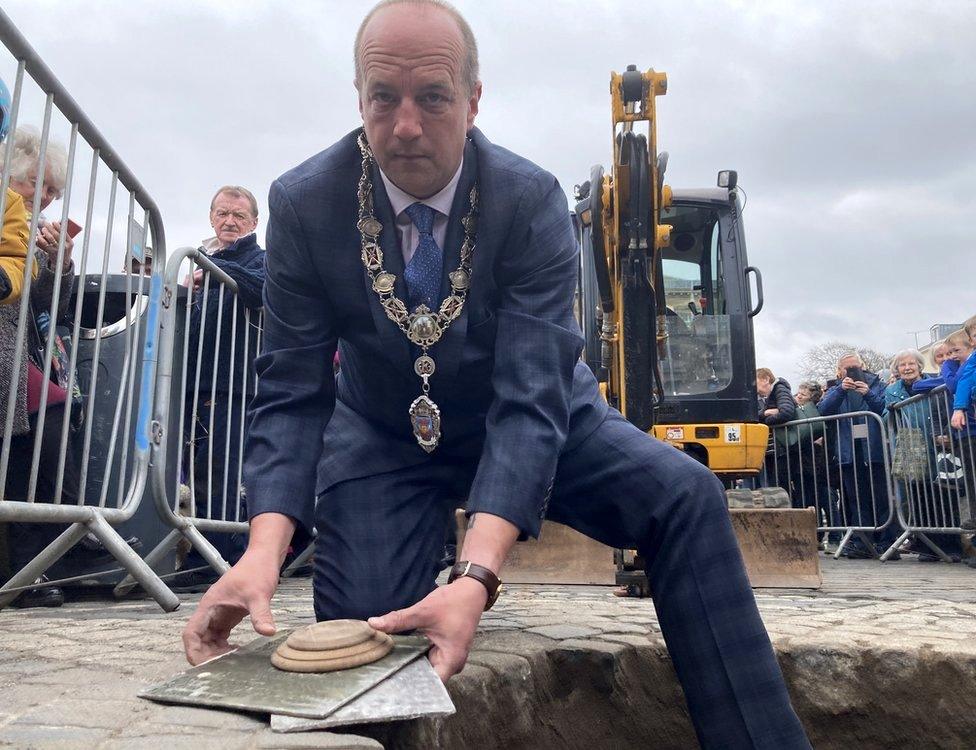
Kelso provost Gavin Horsburgh retrieves the historic items buried in the time capsule
A time capsule in Kelso's market square has been reopened to mark King Charles III's forthcoming coronation.
More than a dozen items, which had never been catalogued, saw daylight for the first time in more than 60 years.
It had been hoped the capsule would contain some memorabilia from previous coronations, but this was not the case.
The main items found were 200-year-old nameplates relating to the workmen involved in laying the cobbles in the square over the past two centuries.
The earliest of the nameplates found in the time capsule, which features paver Thomas Tait, dates back to 1819.
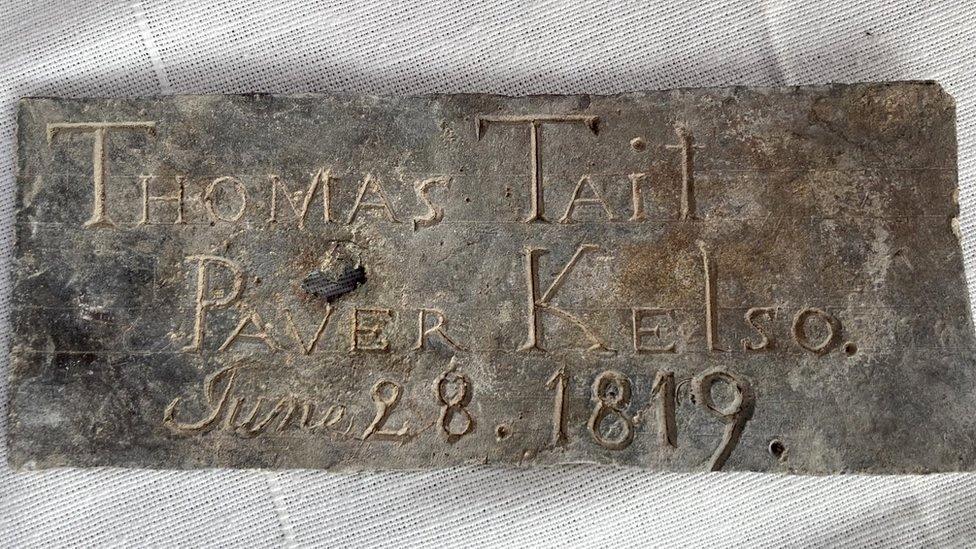
The earliest lead nameplate in the time capsule dated from 1819
Several other workmen are named on the early 19th Century lead plates, with brass nameplates from the late 19th and early 20th Century featuring dignitaries as well as tradesmen.
The casket also included a farthing, halfpenny and penny, which all dated from 1897.
It is not known when the time capsule was first buried under the central bull ring.
Local historians found records of the lead casket being lifted in 1901 ahead of King Edward VII's coronation the following year, but could not trace details of what had been buried.

Workmen spent several days freeing the historic bull ring in Kelso's market square
Kelso provost Gavin Horsburgh said: "The only items we knew to be in there were the ones that Her Majesty the Queen placed there during her visit in 1962.
"While there has not been the coronation items we had hoped for, we will mark the coronation of King Charles III by adding items when the capsule is reburied later this summer.
"There are still many interesting items in there - nameplates of the people who were originally involved with laying our famous cobbles.
"There are also nameplates of previous provosts and, of course, the ceramic vase with the Kelso emblem which was buried by the late Queen Elizabeth."
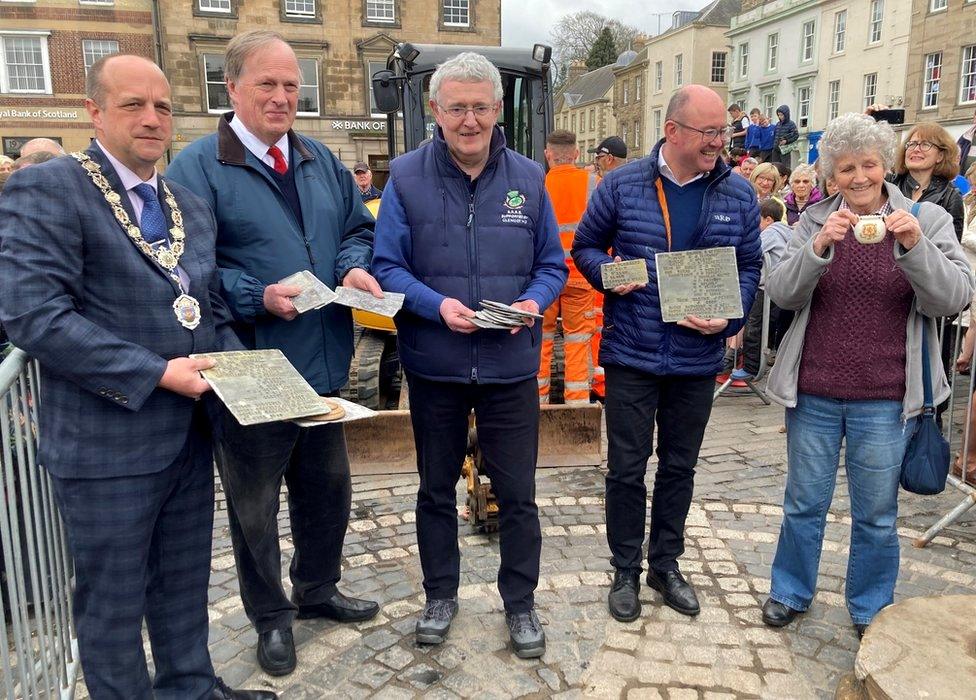
Community leaders with the items taken from the bullring time capsule
Local historians will now catalogue the uncovered items and begin fresh research.
The town's origins date back to the building of Kelso Abbey in the early 12th Century.
While growing into a bustling community, the Rough Wooing - also known as the Eight Years' War which was part of the Anglo-Scottish Wars of the 16th Century - and the Reformation during the 1500s took their toll, with most prominent and religious buildings being burnt down.
Almost all of central Kelso was rebuilt during the late 1700s and 1800s, with cobbles regularly being laid and relaid around the central streets and market square.
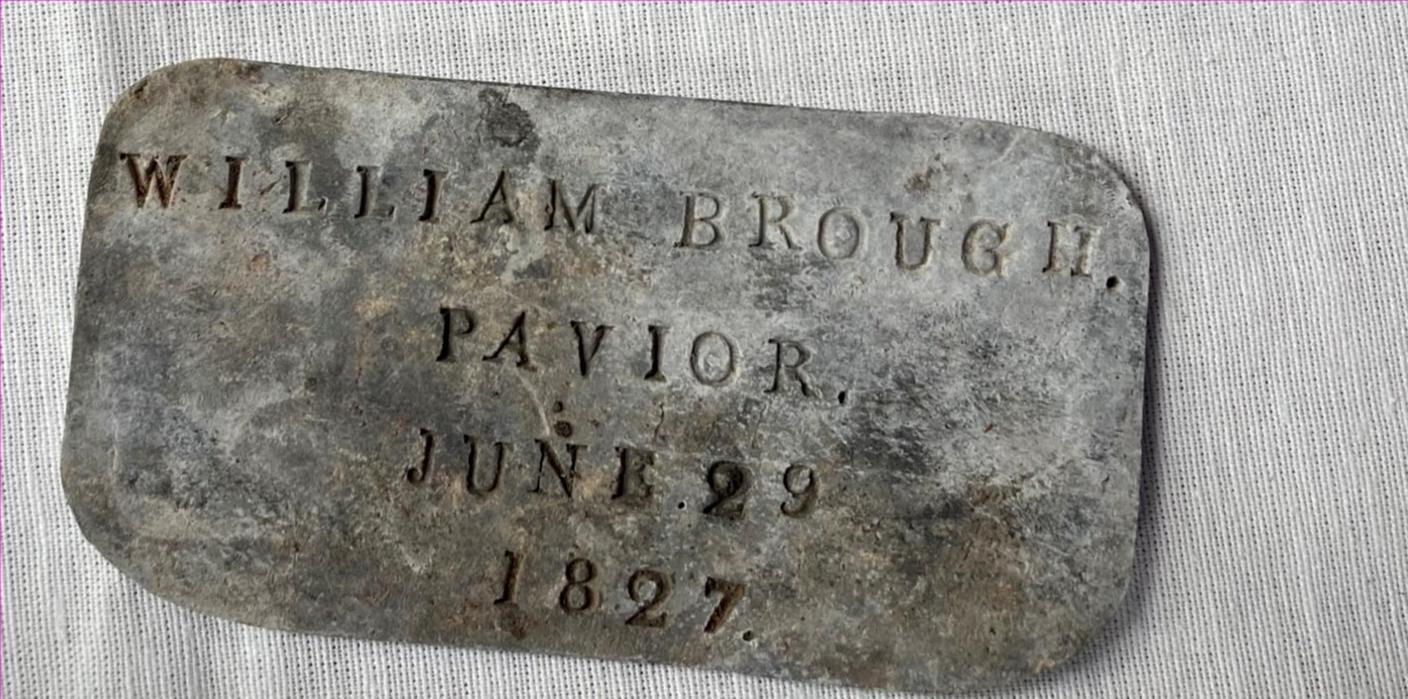
Many of the nameplates refer to workmen involved in laying the cobbled Market Place
Former history teacher Christine Henderson said: "The biggest surprise for me has been how far back these plaques go - a lot earlier than we had thought.
"We did find details of the time capsule from 1901, but hadn't been able to find anything relating to coronations that had gone before.
"It seems that most of the objects which have been put in from time to time are there to remember the people who did the paving.
"These nameplates will tell us a lot more about our beautiful market square."
The contents of the time capsule will go on display at the town hall over the summer, before being reburied later this year.
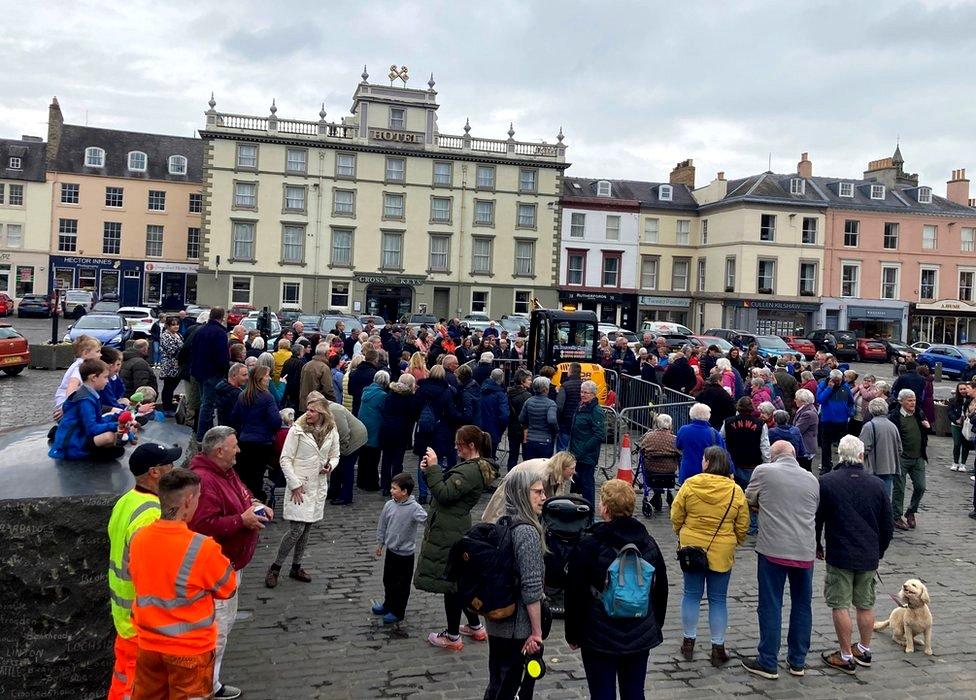
A large crowd gathered to watch the opening of the time capsule